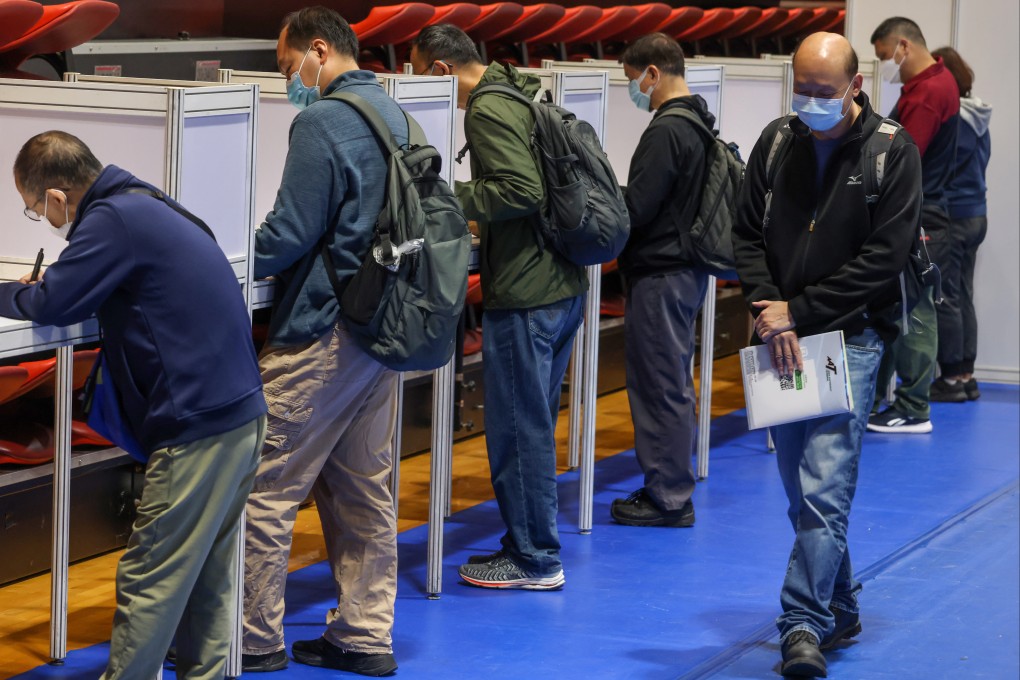Hong Kong’s jobless rate drops to 3.1 per cent, marking 12th straight decline as city seeks post-Covid economic recovery
- Further improvements in job market expected amid tourism revival and disbursement of consumption vouchers, labour chief Chris Sun says
- But experts warn declining workforce needs attention, call for import of workers to ease shortages in some sectors

About 115,100 people were out of work, while total employment increased slightly by 3,900, from about 3.65 million during the December to February period, the Census and Statistics Department revealed on Monday.
The unemployment rate fell 0.2 percentage points compared with the rolling three-month period from December to February, hitting the lowest level since the September to November interval in 2019, when it was also 3.1 per cent.
The figure has been declining since 5.4 per cent was recorded in the three months ending in April last year.
The latest underemployment rate was 1.2 per cent, down 0.1 percentage points.
Secretary for Labour and Welfare Chris Sun Yuk-han said there were more positive developments to come.
“The labour market should improve further with the continued revival of domestic economic activity and inbound tourism. The disbursement of the new batch of consumption vouchers this month will also help,” Sun said.